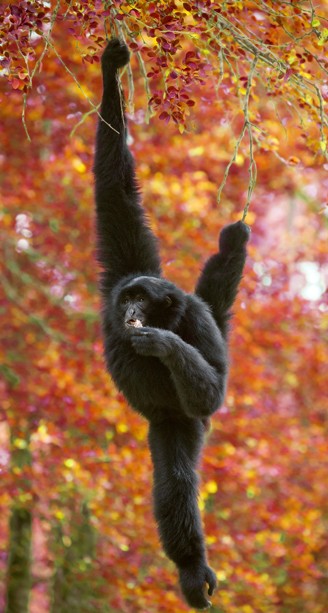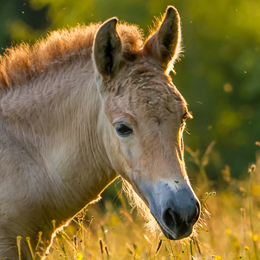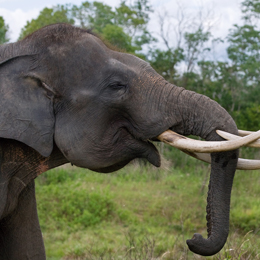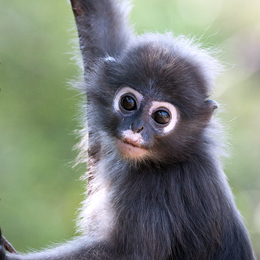Description
In this age of quick marriages and quicker divorces, monogamy in non-human primates is a refreshing concept. Meet siamang, the "faithful" gibbon! The breeding pairs take their vows of "till death do us part" very seriously, and remain together for life. Sounds "oh-so-romantic", right? Not to burst anyone's bubble, but some males may develop polygamous relationships with other female siamangs.
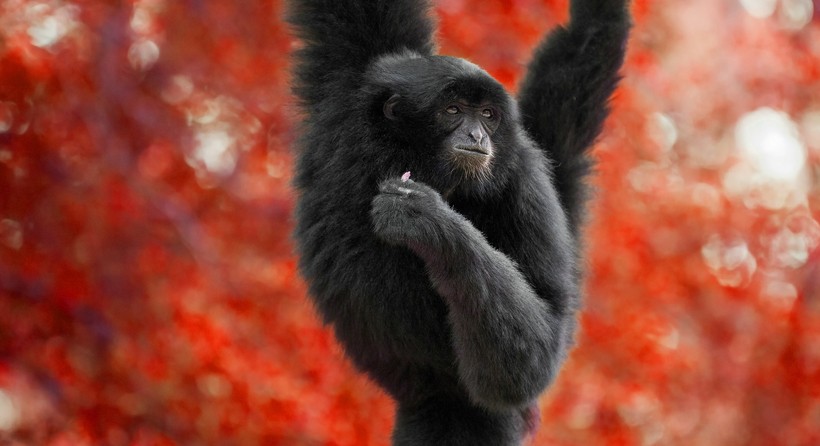
Siamangs are monogamous primates and have one partner for life.
?
Image credits: apple2499/Shutterstock
Siamang, the acrobatic primate, is the darkest, largest, and noisiest of the gibbons. Also known as the Greater Gibbon, siamangs are fascinating creatures. They are lightweight and small with a height of around 73.7 cm - 88.9 cm. They may reach more than 1m while standing. The males weigh around 11.9 kg and females around 10.7 kg.
There is some sexual dimorphism observed in siamangs. Male siamangs are slightly bigger than their female counterparts. Males also have a thick tuft of hair around their genital area. Like human beings, siamangs have strong senses including sight, hearing, taste, touch and smell. They also have a highly developed brains that are typical of primates. Siamangs may live up to the age of 35 years in wild and around 40 years in captivity.
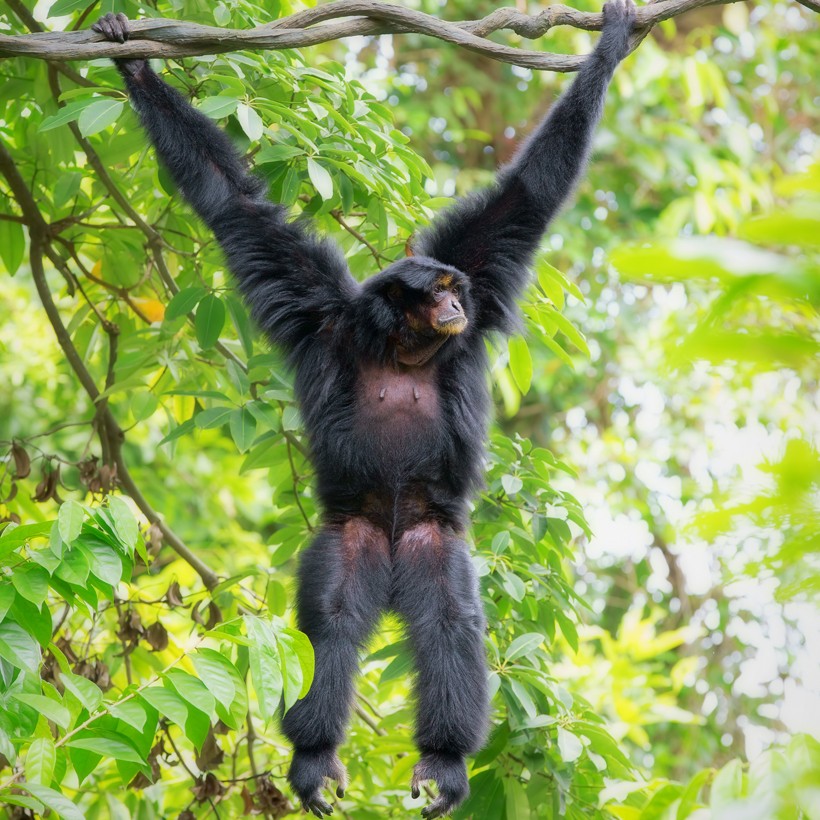
Malaysian siamang (Symphalangus syndactylus continentis) hanging in the trees of Malaysia
?
Image credits: Kjersti Joergensen/Shutterstock
Siamangs have two subspecies: Malaysian siamangs (Symphalangus syndactylus continentis) and Sumatran siamangs (Symphalangus syndactylus syndactylus) based on their respective habitats. They are closely related to gibbons, and share similar characteristics with a few differences. Siamangs are bigger and louder than gibbons. The exceedingly large throat sac under the chin in siamangs also makes them look slightly different from gibbons.
Anatomy and Characteristics
The scientific name of siamangs, Symphalangus, originates from the Greek words "sum" and "phalanx" that mean together and finger respectively. The second and third toes of siamangs are joined by skin. These "webbed" toes are one of the main features to identify siamangs.
Male and female siamangs have a shaggy, long black coat all over their body except the face, palms, soles of the feet, and fingers. Both the sexes have opposable big toes and long canine teeth.
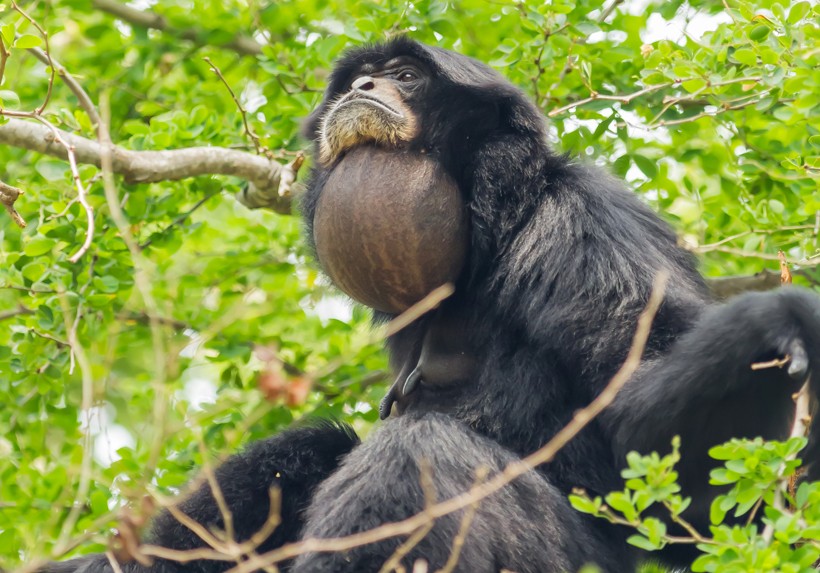
The pink or gray gular (throat) sac of the Siamang
?
Image credits: kajornyot/Shutterstock
Their large (almost like a grapefruit) pink or gray gular (throat) sac acts as a resonance body responsible for producing two notes: a deep note and a loud one. Their cry is a distinctive characteristic, making them the noisiest gibbons.
These tail-less primates have small nostrils and dark eyes. Siamangs have hands similar to human beings. Their hands have four elongated fingers and a small opposable thumb. Likewise, their feet have four toes and an opposable big toe. They grasp and carry things using both hands and feet. The fingers of the hands are also used as a hook for brachiating (swinging through the trees). Their very long arms facilitate them to move quickly through trees.
Habitat
Siamangs are typically found in the tropical rainforests of Sumatra (Indonesia) and Malaysia. They can also be found in some parts of Peninsular Thailand. In particular, the Barisan Mountains and the west-central part of the Sumatra island are the homes of siamangs. In Malaysia, they are found in the southern part of the Perak River.
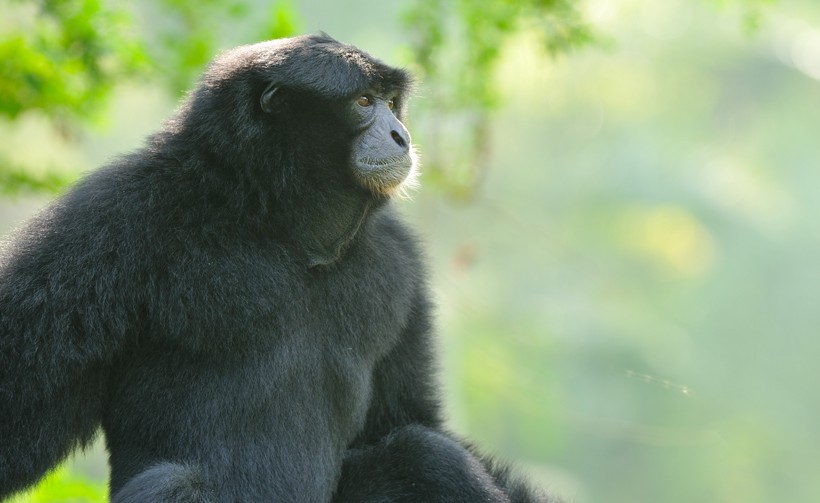
Siamang in Peninsular Thailand
?
Image credits: panda3800/Shutterstock
They prefer altitudes of 700-900 m and are arboreal, living in the upper canopy (tree tops) between 20-40 m. The siamangs are extremely acrobatic and move through the branches using hand-over-hand swinging. This movement is called brachiating. When they move slowly, they hang themselves from a branch before they grab the next branch. Also, siamangs are swinging in the air like a pendulum, swinging up to 50 feet in a single leap.
Siamangs typically do not enter the ground. If they do, they are bipedal (walking on two legs). They stay away from water as they cannot swim.
Diet and Predators
The siamangs diet consists of a variety of foods, and half of their daily activity is spent to foraging and eating. Siamangs primarily eat fruits and leaves, figs being their favorite. While being suspended from the branches, they pick the ripe fruits and avoid the unripe ones. They typically eat fruits during the early part of the day as fruits provide them with more energy. As the day progresses, siamangs eat leaves that can be found easily on tree tops. They tend to eat the young leaves and just a few mature leaves. Siamangs eat over 160 varieties of plants. As an omnivore, they also eat insects, small vertebrates, and eggs of birds.
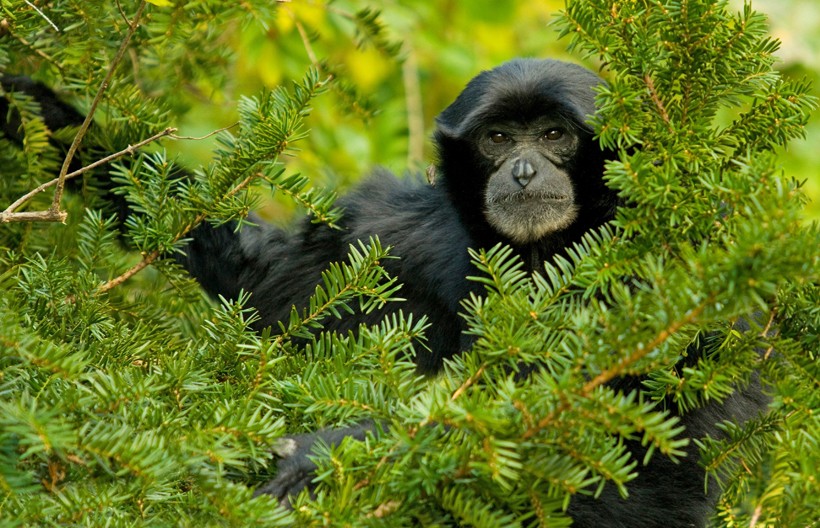
Siamangs eat over 160 varieties of plants.
?
Image credits: Cynthia Kidwell/Shutterstock
Siamangs are extremely agile animals and move quickly. Most part of the day, they live on tree tops. So, it is difficult for the predators to catch them. However, sometimes they may run out of luck, and become prey to large cats such as clouded leopards, big snakes such as pythons, and eagles.
Reproduction and Life Cycle
Siamangs are monogamous primates and have one partner for life. Monogamy is a rare trait among primates. However, polygamy has been observed occasionally among siamangs. The paired males and females share a unique duet song that is sung to one another.
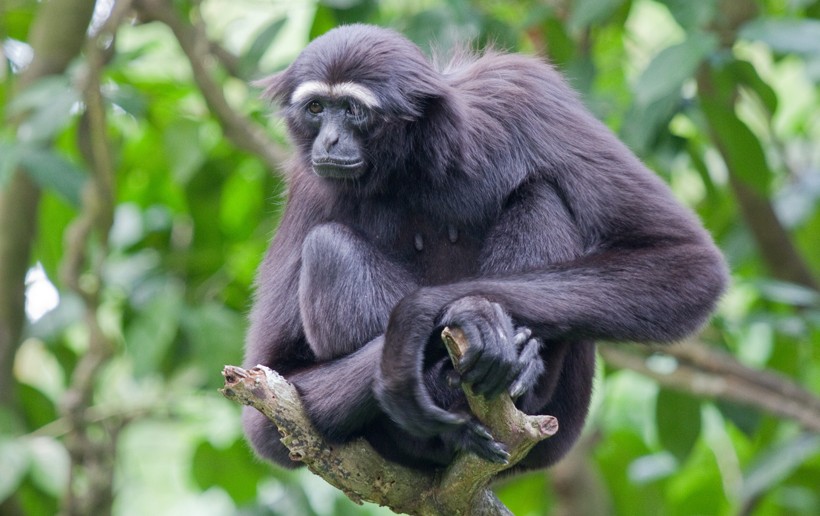
Male and female couples share a unique duet song that is sung to one another.
?
Image credits: Cuson/Shutterstock
Siamangs attain reproductive maturity around 8-9 years. Reproduction among siamangs takes place once in every 2-4 years instead of annually. Typically, conception occurs during May to July and the infants are born between December and February. However, newborns have been seen also during August and September.
The gestation period for siamangs is in between 210 and 240 days. The females give birth to one infant, but rarely twins are born. A female siamang gives birth to about 10 offsprings in her lifetime.
The infants are gray-pink with little hair and weigh on average between 400 and 600 g. Soon after birth, the infant clings to the mother, and is carried by her at all times. After around three months, the carrying time slowly decreases.
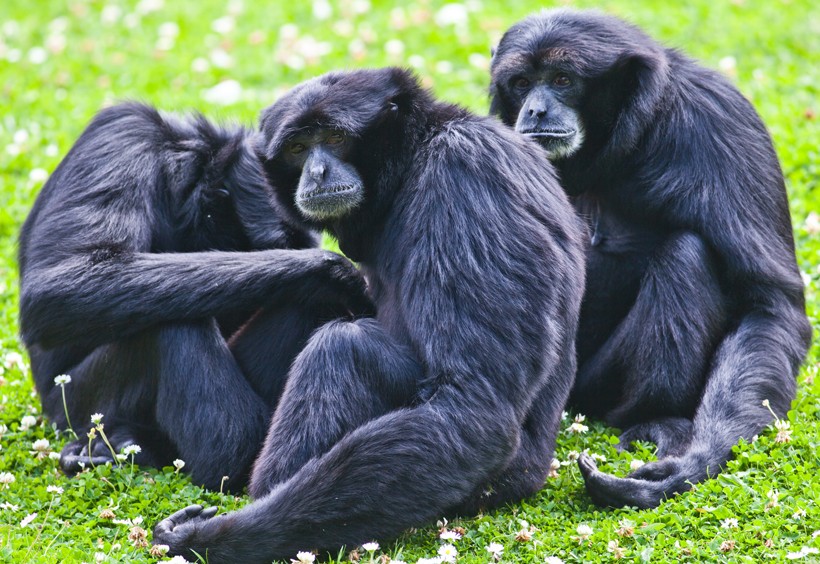
The family consists of the mating pair and their offspring who are less that 8 years old
?
Image credits: Gabriela Insuratelu/Shutterstock
Gradually, the contact between mother and child is also decreased. After one year, the mother becomes intolerant of the infant, and the father takes over the parental care responsibilities. Then father carries the infant with little help from the other group members. In this way, the parental care is divided between mother and father, much like the human families.
Under parental care, the young siamangs learn to interact socially, to move freely and feed independently. By the second year, the parental carrying is significantly decreased, and the young ones are encouraged to travel alone and on their own.
The infants are completely weaned at around 8-12 months but stay with the family until they are 7-8 years old. By 6 months, they start eating solid foods.
Behavior
Siamangs live in a, what we call, "nuclear family". The family consists of the mating pair (male and female siamangs who mate for life) and their offspring who are less that 8 years old. The young males and females emigrate around adolescence. The family has a territory of about 50 acres in the tropical forests and the male siamangs defend their territory from intruders.
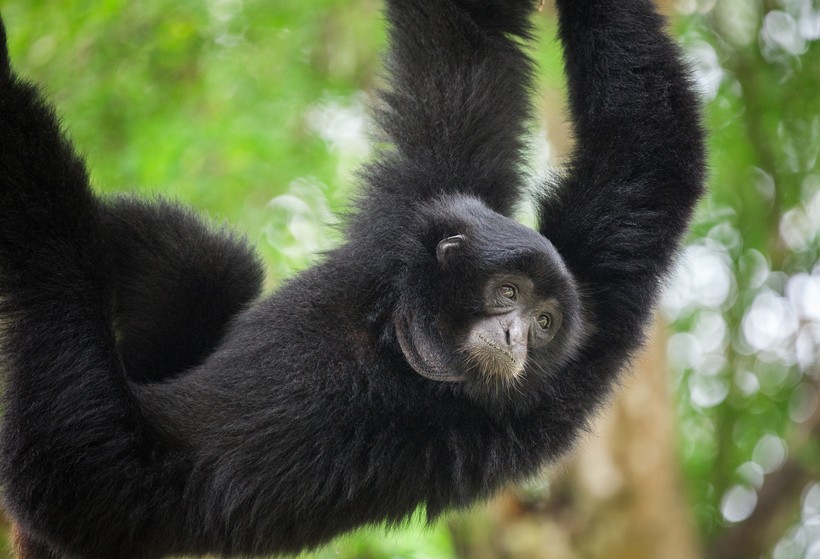
Offspring younger than 8 years are part of the family
?
Image credits: apple2499/Shutterstock
Siamangs are highly territorial species and maintain their territories. The breeding pairs mark their territories by singing duets. The haunting calls echo throughout the forest, and can be heard from far away. The long, complex duets also help to maintain the bond between the mating pairs. The vocal communications are predominantly dominated by the female siamangs. Territorial disputes, if any, are tackled through high-speed chasing, biting, and slapping.
Siamangs are morning creatures with 8 to 10 hours of activity during the day. That day starts at dawn and ends a couple of hours before dusk. They start their "concert", singing loudly, in the morning. This concert lasts for about 15 minutes and breaks the morning silence. Most part of the day is spent traveling and searching for food. During the afternoon, they take a rest whereafter they take resort into tree tops to sleep between branches.
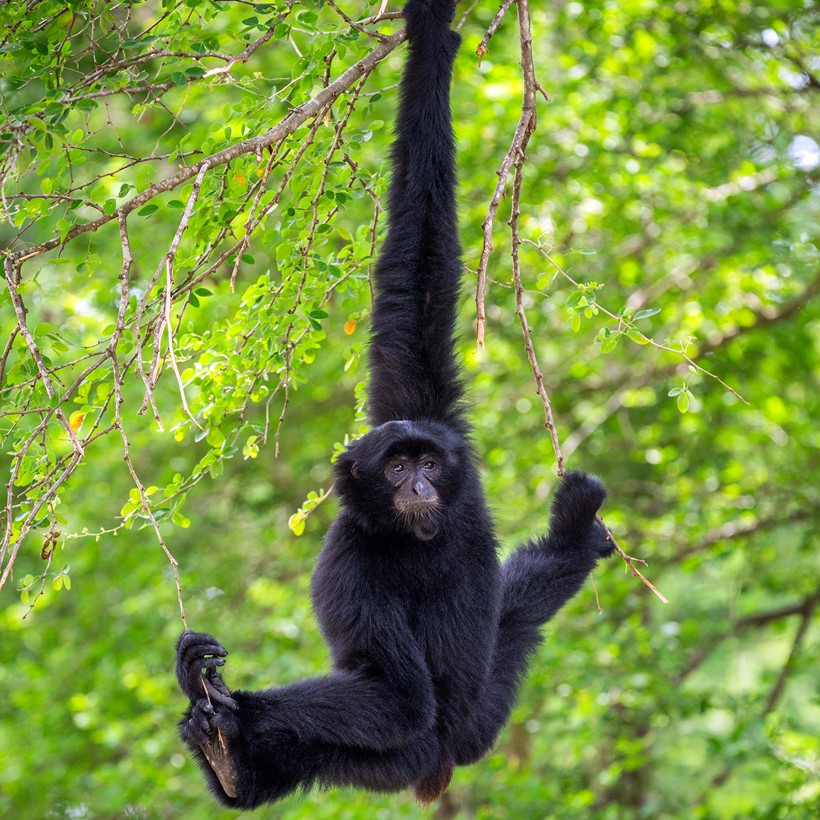
Very long arms help this acrobatic species to move quickly through trees.
?
Image credits: jeep2499/Shutterstock
They have highly developed brains and tend to be very active. There is a high level of interaction among the family members. As a social interaction, they participate in grooming (cleaning each other's hair with fingers), agnostic interaction (fighting and competitions), and playing sessions. Grooming is a form of tactical communication among siamangs and is used to reinforce familial bond among family or group members. While, in captivity, 20 communicatory gestures were identified: 12 tactical communication and 8 visual.
Population and Conservation Status
According to the Asian Primates for the IUCN Red List, 2006, the total population data of siamangs is not available. However, The Indonesian Gibbon Workshop, 2008, estimated a population of fewer than 200,000 siamangs in Sumatra. That number was around 360,000 in 1987. These figures show a dramatic decline in the number of siamangs.
Siamangs are classified as endangered species as there has been 50% population decline in the past five decades at least. Habitat loss is one of the most profound survival threats for siamangs. An estimated 80% of their habitat has been destroyed by human intervention. Forests are cleared for agriculture, infrastructure, coffee plantation, and mining, leaving siamangs homeless. Illegal logging and natural causes such as forest fires also contribute to forest destruction.
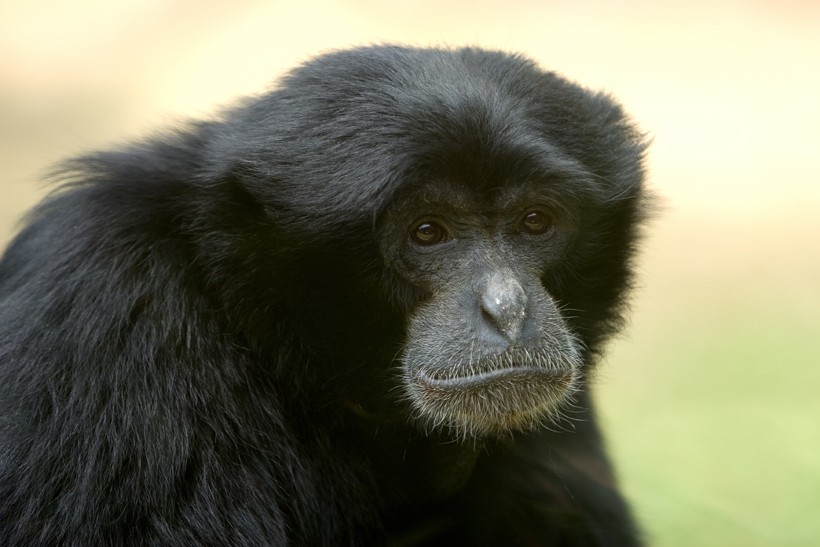
An estimated 80% of their habitat has been destroyed by human intervention.
?
Image credits: Michael Hare/Shutterstock
Besides the loss of habitat also hunting and poaching has brought down the siamang population. Infant siamangs are favorite within the pet trade business. The fiercely protective female siamangs are killed to separate the infants from their mothers and sell the little ones in the illegal pet markets.
Many conservation efforts by organizations, such as Gibbon Conservation Center, Save Our Species and Association of Zoos & Aquariums, are directed to the education of people about the catastrophic decline of the siamang population. This species is protected in Thailand, Indonesia, and Malaysia. Being listed by the Convention on International Trade in Endangered Species (CITES), international trading of siamangs is prohibited.
Siamangs play an important role in the ecosystem as seed dispersers as they are predominantly frugivorous. Therefore, protecting them is essential. Their conservation is possible by supporting their natural habitats. Stricter laws against illegal logging, enforcement of export restrictions on pet trade, and more protected forest reserves can help to conserve this wonderful primate.
Evolutionary History of Siamangs
Gibbon-like fossils have been recovered from Europe, Africa, and Asia. The earliest primates known date back to more than 60 million years ago. Primates are believed to have been evolved from insectivores. Old world monkeys may have evolved first, followed by the lesser apes such as gibbons and siamangs. The greater apes such as chimpanzees and gorillas were evolved from the lesser apes.
Funfacts
- Siamangs take "just another lazy day" to the next level. Half of their day is spent by taking rest.
- An average siamang home is spread in a range of 23 hectares.
- Dad siamangs are known to offer more parental care to the infants than moms.
- Mating pairs have their own special song that they sing together to straighten their bond.
- Siamangs sing in the morning, and the song can be heard from a distance of about two kilometers.
- Siamangs eat a healthy diet containing fruit for about 60%.
- A siamang is a major sweet tooth and prefers fruits that contain a high level of sugar such as fig.
- They balance this sugar cravings by eating more than 150 species of plants.
- Siamangs have unusually large hands that are bigger than their legs.
- Among siamangs, there is a remarkable coordination and contact during their daily chores what reflect their developed brains.
- Grooming is a sign of dominance among siamangs. The more dominant a siamang is, the more grooming it receives.
